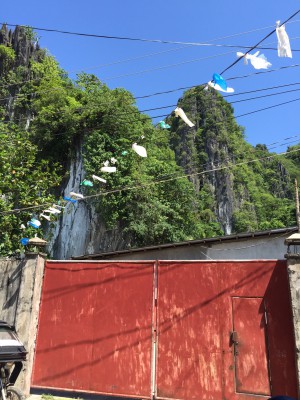This is my first time in Osaka but for Andrew it is his second time in this awesome city. There’s many things to do, see and of course eat. Osaka is the foodie capital of Japan and I don’t think you can get a bad bowl of food. Before coming to Japan I knew there was more to the cuisine than ramen noddles and sushi.
Food
There was okonomiyaki – a type of savoury pancake with toppings of your preference such as seafood or pork belly or vegetables. The choice is really yours and it is cooked fresh in front of you on a big hot plate. My first time eating at a sushi train restaurant and I ate everything I wanted to (the free green tea refill is the best) and it averages around £8 per person, which is inexpensive. Sushi is one of the cheapest foods in Japan! We also tried takoyaki – a flour based doughball filled with octopus and topped with katsuobushi shavings – yum. There’s also countless shops selling ramen in a aromatic flavourless soup base.




Not just Osaka but Japan really does have restaurants that cater for everyone’s pocket. However if you are on a budget it’s worthwhile to check a few places out before committing as prices can vary drastically.

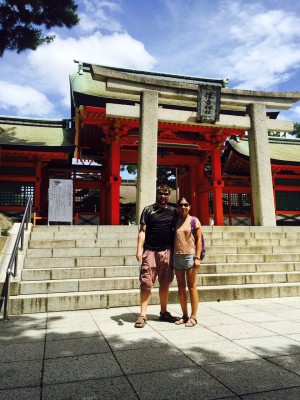










The Osaka 2 day Amazing Pass is a steal if you are planning to visit Osaka’s attractions because it allows you:
- unlimited rides on all the trains and buses within Osaka city . You can obtain the boundary information by asking when you buy the pass
- access to 28 sights, where you will get free entry (boat trips, sightseeing and onsens are included)
- access to some other sights, which you can get discount entry to
- discount on some certain restaurants and shops with your tokens that come in the brochure when you purchase the pass
There is the 1 day pass, which costs 2,300 Yen however it is much more worthwhile to get the 2 day pass, which costs 3,000 Yen and you will have more more to visit the attractions.
Even if you only visit a few attractions the pass pays for itself and in addition you won’t have to pay additional on the subways to get around Osaka. Osaka is a big place and yes cycling around the city is an option because it is flat and very safe to cycle around but this depends on how much time you have and what you want to see. I would first go to the information place at Kansai airport of any of the JR stations to see if it is worth you getting a pass. It certainly did for us.

A breakdown of what we had saved:
Attractions we visited:
Umeda Sky Building Floating Garden Observatory – 800 Yen saved
HEP Five Ferris Wheel – 500 Yen saved
Osaka Museum of History – 600 Yen saved
Shitennoji Temple – 300 Yen saved
Osaka Zoo – 500 Yen saved
Suminoe Spa Onsen – 650 Yen saved
Tempozan Giant Ferris Wheel – 800 Yen saved
Total entry to all attractions above with no pass – 4,150 Yen
Cost of the Osaka 2 day Amazing Pass – 3,000 Yen
Money saved – 1,150 Yen and all transportation around the city for free.
Tips on using the pass:
- you can only visit the attractions once and multiply reentries will not be allowed
- use the pass as a normal train ticket and place it through the barriers when using the trains
- check at the information desk what attractions are closed, open, opening hours because a lot close on Mondays, some close on Tuesdays and some were closed for maintenance. It was very confusing so ask or you will waste your time.
To see what attractions the pass entitles you to click here.
To find out more about the pass click here.
]]>After visiting the main city on the island of Palawan, Puerto Princessa, we booked a ticket on a bus heading up to the top of the island bound for the tourist town of El Nido.
El Nido is a tiny collection of buildings, almost exclusively aimed at servicing the needs of the tourists that visit. You have the usual collection of guesthouses, restaurants and tour operators that you see in any place like this.
We had heard about El Nido from other backpackers and blogs and wanted to explore the islands that are around the El Nido bay. We quickly booked an island hopping tour that involved some snorkelling.
But before we went island hopping I read about the local cliff, Taraw. There was a hidden path that went up the cliff and held amazing views from the top. I also read that it wasn’t for novice climbers, you needed good footwear and stamina. We found a guide and headed up… After finishing it I kept thinking maybe I should have headed those warnings because we ended totally exhausted and I was shaking from the exertion, but we did it. Here are some pictures from the climb.


And here is the view from the top, totally worth it.

Once we’d recovered (the next day) we went hopping around some local islands. There are a few tours to choose from (A, B, C, D) but we chose the one with a few lagoons, tour B.
We were picked up and sailed about 40 minutes to Small Lagoon where we drifted slowly through the shallow, crystal clear waters.

Next we went to secret lagoon, a small lagoon only accessible by a cave entrance during low tide. Nothing spectacular but interesting.

Our last stop before heading back was big lagoon, a long and shallow lagoon with a surprisingly deep end. You can choose to snorkel or kayak down.

The tour cost 1300 pesos each and included a very nice buffet lunch.
A good day out for not so much money!
]]>This was our first time in Palawan Island. It is a beautiful place and recently I saw it was one the most beautiful islands in the world. In brochures you will see the crystal blue waters, perfect white sandy beaches against the grey karst limestone backdrops.
The island is long and narrow and there are also several smaller islands (hello! Philippines is made up of more than 7000+ islands!) consisting of Coron, Busuanga and several others that make up this province.
We took the Cebu plane from Cebu to Puerto Princesa, where we spent a few days here visiting the Underground River and doing some island hopping.
In Puerto Princesa we stayed at a hostel called the Sheebang Hostel which was a distance away from the airport and there was not much outside of the hostel. The main road was extremely noisy and busy and it was great this hostel was tucked away from the main street.
We both really wanted to go to the Underground River in Sabang (80km or 50 miles away from the city center). The Underground River is located in a National Park that was recently discovered back in 2010. The cave is one of the biggest ones in the world with the river running through it and eventually joining up to the West Philippine Sea. It has no been named of the great wonders of the world and given a UNESCO title and so many people come here to venture into the longest underground river in the world. Due to it being recently discovered, a lot of research is still being carried out hence why only a small proportion is open to the public. They do say that you have to obtain tickets prior to going there because only a certain number of people are allowed in on each day but we booked our through a tour company (thanks to our trike driver or dropped us outside the agent and we bagged a 10% discount) and they will usually have tickets reserved already.
The cost of the tour is normally 1500 Pesos but we did get a 10% discount.
To be honest I was a little disappointed because we only got 45 minutes in the cave. The journey takes 2 hours to drive to Sabang along the short and windy roads (with the joys of someone vomiting freeflow on the way). You then get there and have to wait due to the number of people waiting to get on the local boats to the island. You can spend 550 Pesos to do the zipline but we hadn’t brought that much cash with us so we waited and had the buffet lunch, which was nice. After that we headed out on a boat to the island and then queued up for another hour and a half before getting on a boat and heading into the cave. I have seen pictures of the river from a Filipino friend but I just think now with so many tourists flocking here it isn’t as beautiful anymore. The 45 minute tour is nice but not informative (no details about the discovery, research etc). There is some information but then you will be spending the last 30 minutes trying to spot the elephant, Buddha, snake etc!



We also decided to do some island hopping but we were both very excited about because we wanted to see the views that we had seen in the pictures elsewhere. The cost for 1 day was 1000 Pesos and then you had to rent the snorkel and mask. Shoes, which were recommended could also be rented but we decided to risk it and save 300 Pesos. Everything was kind of adding up and we weren’t used to paying for added extras. We were in a group of 8 and because there are multiple islands we had to choice which of the ones we wanted to go to. Island Pandan was apparently the most beautiful island but again we were told we had to pay extra to go there. We refused to pay but ended up going there anyways. We visited 3 islands in total – Starfish Island, Cowrie Island and Pandan Island.
Starfish Island was a total disappointment. I was angry because people were just picking up the starfish and taking selfies and then throwing them back into the water. No one was telling them not to do it and that there actions would have consequences for the sealife. Even the Fillipinos were joining in. The whole place was a tourist trap. It was not nice at all – the coral was dead and I didn’t see many starfish.

The next island was Cowrie island with its white sand and blue waters. We had our buffet lunch here too.


Island Pandan was also great but again, I just felt something lacking with the all of this island hopping. Yes sure it was nice scenery but I think people’s actions had put me off a little bit.
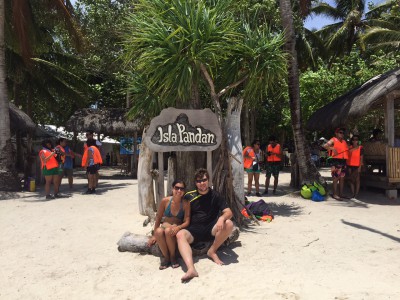

]]>
The JR website has some good information regarding outlets where you can purchase the JR pass. As we were in Manila, we went to a travel agents to get ours (there are a few places to obtain a pass). The link is here and you can also see there are outlets in Cebu too.
I emailed a few and I worked on the basis that I needed the pass past and whoever got back to me first would get my business.
The two companies that got back to me were:
Attic Tours Phils. Inc. (I decided not to go with them because they charged an extra 5% if you pay by credit card)
Unit 203 Coko Bldg. 1
Patio Madrigal Compound
2550 Roxas Blvd. Pasay City,
Manila.
Telephone: 556 6301 to 05 Loc. 201
Mobile: +63 922 8900654
Universal Holidays Inc.
Mezzaine Floor,
Dusit Thani Hotel
Ayala Center,
Makati City,
Manila.
Telephone: 032 859 3828
www. universalholidays.com
With Universal Holidays Inc we could:
- you can purchase the 7, 14, 21 day pass (green car or ordinary car)
- get the JR pass the same day. You have to wait for around 15 minutes (depending on how busy they are) for them to print of the receipt where you will exchange it for the pass in Japan.
- pay by cash or credit card with no extra fees (there fees are already included in the overall purchase of the pass).
- they also print off a useful leaflet detailing how to exchange, use the pass, restrictions which is very helpful.
The location of the office is very easy to get too. You get the LRT to Ayala Station and then ask someone for directions. It’s right outside a big shopping center inside the hotel itself.
Voila….15 minutes later and here is the pass (we had already exchanged the ticket in Japan!)
I would definitely recommend Universal Holidays as I was emailing them back and forth with a bunch of questions and they were always quick to email me back.


]]>
After travelling around the Philippines for a bit you soon realise that all the backpackers congregate at one hostel because there are only a limited handful in each city. Cheap accommodation is scarce and it makes me think that setting up a business in the Philippines is difficult? I am not sure but the availability compared to other Southeast asian countries is non existent. So as I was sitting around other backpackers you hear a lot of stories and one of them was this snorkelling trip, arranged through a hostel around an island called Apo Island. Everyone was raving about the number of turtles they saw and it had never occurred to me how abundant the wildlife was around the Philippines because everyone talked about Malaysia and Thailand and the diving around those countries.
So off we went to Dumaguete – a town famous with many colleges and universities. We took the bus from Boljoon to Lilo-An port, located in Santander. From there we got on a boat bound for Sibulan. There were boats every hour and the journey time was 45 minutes. When we arrived at the Sibulan port we got a jeepney and tricycle (total cost was 38 Pesos) to get us to Harold’s Mansion.
Harold’s Mansion is again the only hostel in Dumaguete and they have cheap dorms for once (250 Pesos). Men and women are separated. The aircon is cold and they serve good food for reasonable prices. The breakfast is okay and consists of bread, coffee and tea. The damp in the rooms is a problem but you can overlook that when they only charge 250 Pesos per night, almost half other hostels.
Attached to Harold’s Mansion is a dive shop but all we were interested in was the snorkelling trip they offered around Apo Island for 1000 Pesos, which was really cheap. It includes everything from transport, snorkelling gear and lunch – a full day out.
You can stay on Apo Island but prices were more than our budget but it is not a crowded place at all.
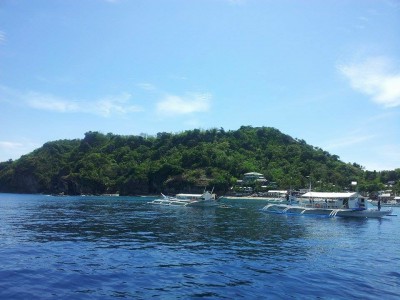
We saw 10 turtles in total (even at the start of the boat trip people were saying they could see turtles!) Some were so big and some were smaller. They were happy feeding on the seaweed whilst we floated on the surface watching them. From time to time they would come up to the surface for their next breath so it was amazing there is one swimming next to you. Most of the time we were quite close to the beach so there are lots of beautiful corals and fishes to look at.
I would definitely recommend people to come to the Phillipines – the sea life, beaches will not disappoint you. Most of the areas are becoming quite touristy so if you want to see 10 turtles instead of one, Apo Island is the place to go. I don’t know when I can see so many turtles in one place again.




After Manila we took a flight to Cebu city, which is an island south of Manila (£32 per person one way including 20kg of luggage). The airport is Mactan Cebu International Airport. The best way to get around the Philippines is either by boat if the weather and schedule permits. The other option is flying, which is a bit more expensive but incredibly quick so it all depends on your budget and time constraints. We took a mixture of boats and flights throughout our trip around Philippines.
The low cost carriers around the Philippines include:
They always have promotions now and again and sometimes the fare can be dirt cheap so it’s worth looking back at their websites from time to time. The Philippines Airlines isn’t specifically a low cost carrier but prices are sometimes the same as Cebu Air.
Another thing to note is everytime you leave an airport you need to pay a ‘departure tax’. This could be anywhere from 400 Pesos to 1300 Pesos. However if you book your flights online you will likely have already paid the fees as part of your overall airfare.
Cebu city was a stopover for us so we could explore the southern tip around Boljoon and Oslob (whale sharks!). You can sightsee around Cebu city but it was very crowded and busy. There are a few churches nearby.
We stayed at Le Village Guesthouse and from there we took a taxi (70 pesos + 10 pesos entrance fee into the bus terminal?! – yes very bizarre). There are lots of buses departing and different types of buses. Some have no aircon whilst others have aircon. As it is not a lot more expensive we opted for the aircon bus as the journey was at least 3 and a half hours dependant on traffic. It does make stops on the way to drop off and pick up passengers. The fare was 120 Pesos.


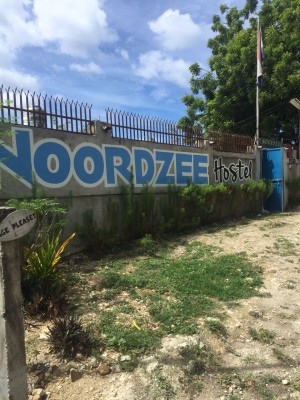



Manila – the capital of Phillipines is an intriguing city in Southeast Asia. It’s the first time where we could have a decent conservation to any stranger on the train or on the streets because they are so friendly, helpful and most of all they speak perfect English. Most Fillipinos learn English at a very young age at school along with Tagalog, which are their official languages. There are also lots of dialects, which we came across as we travelled to the south island for a spot of whale sharks, Palawan (voted one of the most beautiful islands in the whole world) and Coron, where there are many Japanese ship wrecks.
Another interesting thing is that the Phillipines were colonized by the Spanish for 300 years and there are many Catholic churches, which is great for a change after looking at so many Asian temples. Everywhere you will see Spanish themed buildings such as:


Fort Santiago was built by the Spanish conquistador Miguel López de Legazpi and was used to protect the new Manila that had been formed. There is also a nice park to walk around.


The Museum of the Filipino People is a good starting point if you want to learn more about the history of Phillipines and there is also an Art Museum but there are separate to each other, although only a 5 minute walk between them.

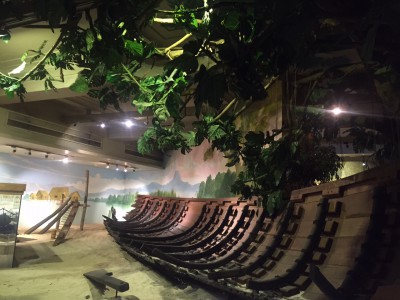

We spent 2 days in Manila when we landed in the Phillipines and then another 7 days at the end before flying to Japan. However the last days were not very good for travelling and seeing what is around Manila as a typhoon had welcomed itself onto the city and it rained heavily every single day. This made it difficult for us to travel up north to see Taal Volcano Batangas and also Mount Mayan, which you can climb. The Banaue Rice Terraces are also spectacular during the rainy season. There are places we have penciled in for a future visit to the Philippines.
The rain was so bad that it is not uncommon for certain parts of Manila to become flooded as the drainage system is blocked really easily. Luckily there are many shopping malls in Manila and also some indoor attractions, such as the Manila Ocean Park. Normally I don’t like Ocean Parks as I would rather see the animals and sea life in their natural habitat and free from barriers but we had 7 days to fill with activities.

We are going to swim with the whale sharks in our next post!
]]>As we got into Vietnam and spoke to people that had recently been on the trip we started getting slightly different views, tales of bad boat companies, cramped conditions and rats.
We decided that this was not a time to penny pinch on the experience, and to actually weigh the options before us to make a choice that is frugal but not to the extent where we sour the experience.

Costs
You can get a Ha Long Bay tour for as little as $40 or as much as $200 per person, with a whole range in between. Having heard the tales of rats and bad food from people at the lower end of that range we decided to go up just a little from the bottom and paid $87 each for the experience. This included one night and two days on Ha Long Bay, food for the time we were there, as well as transport there and back. It also included some limited activities while we were there, such as kayaking.
Activities

For our tour everything was prearranged with very little “free time.”
We were picked up first thing in the morning and driven the three hours to Hanoi to Ha Long Bay – half way we stopped at a rest point for 30 minutes. One of those typical places where bus companies are paid to drop customers for a while. Overly expensive food and drinks, and plenty of tourist tat for you to buy, should you wish.
When we arrived on the boat we were given the keys to our room straight away, it was rather nice, even had an en-suite. Very small, but didn’t feel cramped – and to be honest it’s a boat cabin, you can’t expect any more for that money.

We were sailed out into Ha Long Bay itself to enjoy the thousands of islands that dot this area of Vietnam. We were not alone, there were hundreds of other boats around us. Our guide said that there are 300 overnight boats in Ha Long Bay at any one time. We spent some time just looking out at the islands and enjoying the peace and quiet.
We were unfortunate that there was lots of rain as we were moving into Ha Long Bay, a thunderstorm in fact. Once it hit we sheltered in the boat and were fed a good lunch while the rain cleared. There was some talk that if the rain didn’t clear we wouldn’t get to kayak, but thankfully it did and we moved to the kayaking station.
In a little mini bay you could kayak a two person boat around to your heart’s content, but if you wanted to go into the little cove with monkeys and interesting plants you had to pay 50,000 VND each – we opted for this. It was a little short, 30 minutes, but it was interesting and I enjoyed the combination of drifting lazily and some speed.

After the kayaking we went to a pearl farm. Not much to see really, a very basic introduction room with examples and very little description of what was going on. There was a room where you could see them implanting the “seeds” into the oysters that, hopefully, became the pearls later. It seemed very clinical and quick, they opened the oysters and were done in a matter of seconds. Depending on the type of oyster they are then left for a number of years to grow a pearl, then they are cracked open and the pearls, if there are any, are removed. The oyster itself is used for meat. I did feel a little educated but I feel they could do with some more descriptions of what is going on.
Then it was back to the boat again to be taken to the “Surprising Cave”. This is a series of chambers, each bigger than the last, full of interesting rock formations. Having seen many caves in the past I expected to be bored, but there were things there that I didn’t expect. The ceiling of the cave was pock marked, like a golf ball – I have no idea how that could have formed. The last chamber was massive and we spent about 15 minutes just walking through it.

Our last stop of the tour was a beach island. You could choose to either relax on the beach, or climb the steps to view point at the top of the hill. We opted for the latter and set off up the hill. Very tiring, by the time I got to the top I was breathing hard and needed a rest, but it was worth it. The view was incredible. Hundreds of islands stretching in all directions with boats and floating platforms dotted in between. I’ve never seen anything like it before and I think it’s my favourite memory of the whole time in Ha Long Bay.

Back to the boat again and we enjoyed a very good, and varied, evening meal. It even involved a demonstration on how to make Vietnamese spring rolls, which we even got to eat!
The morning after there was just time for a quick breakfast before we got back on the boat to go back to Hanoi.
I think Ha Long Bay was the highlight of our trip to Hanoi. The city itself is busy and crowded, it was good to get away from it to somewhere that’s calm and serene. It’s quite expensive on a backpackers’ budget but I think it’s definitely worth the money, just don’t go for the cheapest price!

Where next?
After Ha Long Bay we are flying to our next country, the Philippines. We will spend a few days in the capital city of Manilla. It’s home to an ancient Spanish fort built when it was a colony, as well as quite a few old churches and a cathedral, all built in a western style. I can’t wait to walk the old walls and try to see what’s different from back home.
]]>Saigon now called Ho Chi Minh City is a great place to really see Vietnam for the first time. We travelled from Cambodia to Saigon via bus. The first thing you notice is the amount of motorbikes in this city…it’s chaos (but it’s an organised type). During our visit, we visited:
Cu Chi Tunnels – This extensive network of over 220km of tunnels became legendary when they played a vital role in the war against the Americans. Back then they served as functioning underground cities with kitchens, sleeping areas, fighting zones, trap doors, weapon storage rooms etc. The system is very extensive. They never got flooded because there was always one tunnel that drained into the Mekong Delta. They were also free of disease. The Vietnamese are so innovative – they had trap doors – armpit spike, souvenir trap, rolling trap, window trap – there are so many traps and all made by either using the remains of a bomb or from bamboo. It was so interesting – they even had shoes dubbed ‘Ho Chi Minh shoes’ which confused the enemy because you could not tell which direction the Viet Cong went when worn. Really interesting. You also get to go into the tunnel – only 100m is available for tourists to climb through and see what it feels like. At the end there is a shooting range where you can have a try at firing an AK47, machine gun and some others I cannot remember. 10 bullets is only around £10. It’s all controlled but man it was loud, I’m not sure earmuffs were enough.


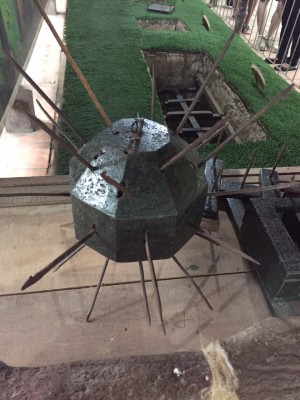


Notre Dame Cathedral and Central Post Office – Both which were built by French colonists. The red bricks of the cathedral were all all imported from France.


Reunification Palace – This Palace has a lot of history to it and the place is still used as an office.

War Remnants Museum – Fascinating to go and understand more about the Vietnamese War with the Americans. Transcripts, exhibitions, stories and artifacts are all over the museum. Even though I may have learnt about the Vietnamese war briefly back at school, it’s not the same as being here and reading about it and seeing it yourself.


Ho Chi Minh – The city is really modern which surprised me as we came from Phnom Penh, Cambodia, where they were still building their main road into the city! The most striking thing about this city is the amount of motorbikes. Some say there are more motorbikes than people. It’s just crazy the amount of traffic and then you have to think about the cars and exactly how do they weave in and out of this mad crowd. It’s more of a organised mad chaos! Crossing the streets you just have to go for it and put your first step out there. Doing it the Western way and waiting for a gap is not going to work. So you just walk about and the motorbikes will start weaving around you. They may beep their horn but they do this all the time. There isn’t a minute in this city where is there no beeping car, bus or motorbike horns.

Transport – The bus system is also good to get around the city. We went to Chinatown and Japantown and both times we got the bus. Getting a SIM card is the first thing we always do when we enter a new city as this lets us check our position and how to get to our hostel and plan our routes around town. Most times we may well get a tour however sometimes we just go off and do it ourselves. Google maps is okay but sometimes we went to the location indicated but couldn’t find what we were looking for. It also tells you what bus numbers you can take to your destination and then when you get on the bus you keep looking at your GPS and then press the buzzer when you want to get off. Relying on the ticket seller is no use as most do not speak English. They are also incredibly cheap with journeys costing around 5000 – 7000VND per journey (18p-21p).
Food – The food is also great in this part of the city. Home to the many different types of soup noodles and then there is a mixture of Chinese foods in there it was really good. It’s so cheap as well. If you eat out on the stalls, which we did most times, it costs around 70p upwards.
The people are really friendly too. As we stayed a few nights near the Backpackers District there was a nearby park which was always full of people. We had loads of students coming upto us so they could practice their English, which is really good to see. They said lots of grammar is taught at school but the speaking and listening abilities they had were lacking so they tend to go to private sessions outside of class to do this. It might seem intimidating but all they want to do is ask questions and have a conversation.
Next time we will be on the boat floating along Halong Bay!
]]>